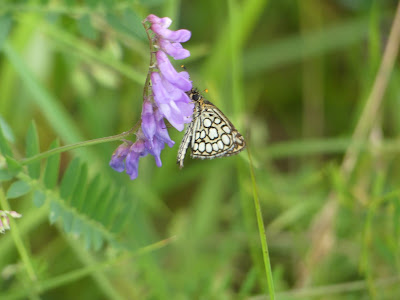Now I'm fast running out of new butterfly species to find in Belgium, I should perhaps start working on my odonata list!
Wednesday, 17 July 2024
Accidental lifer
Now I'm fast running out of new butterfly species to find in Belgium, I should perhaps start working on my odonata list!
Friday, 12 July 2024
Cranberry craziness
I finally managed to connect with my first Cranberry Fritillaries last weekend. In Belgium, this species is restricted to peat bogs in the Ardennes and I have made several trips to try and find one over the years but only twice seen a distant fritillary in flight which may or may not have been another species. This time, the reserve seemed very quiet at first but I soon spotted a fritillary feeding on a thistle and managed to fire off a few record shots.
I was, however, standing on a boardwalk in the middle of a bog so couldn't get any closer and the butterfly quickly dropped down into the grasses and disappeared. I thus decided to try the cycle path surrounding the reserve since the verges had a lot more flowers than the bog itself plus my movements would be less restricted there. This was a wise move since I soon saw another Cranberry Fritillary, then two more, and eventually counted around 20 individuals over the next hour or two!






